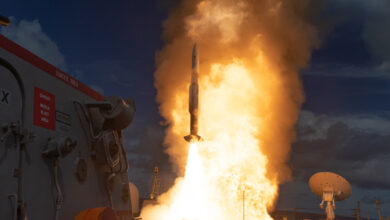Navy SEALs’ Long-Awaited Sub to Transform Underwater Warfare
The US Navy declared initial operational capability for Lockheed Martin’s Dry Combat Submersible (DCS) last month.
The DCS’ dry interior allows special operations forces to travel without a wetsuit, unlike similar submersibles currently operational.
The navy’s current SEAL Delivery Vehicle, the MK 11, is a flooded platform requiring operators to ride submerged in frigid water for up to 36 nautical miles (66 kilometers/ 41 miles) and around nine hours.
“Because the SEALs are exposed to the environment, water temperature can be a more limiting factor than battery capacity,” wrote Lieutenant Commander Christopher J. Kelly in a 1998 study.
Dry Environment
Moreover, the vehicle’s self-contained lock-in/lock-out chamber allows the operators to enter and exit the vehicle while entirely submerged and undetected.
“The Dry Combat Submersible has the potential to transform undersea warfare for special operators,” said C6ISR vice president and general manager at Lockheed Martin Gregg Bauer.
“DCS provides safe, clandestine delivery for occupants over long distances in a completely dry environment and features a lock-in and lock-out chamber. Occupants arrive at the mission warm, rested, hydrated, and ready, making this vessel a key advantage in mission success.”
Likely Features
The navy first announced a DCS-like program, the Advanced SEAL Delivery System (ASDS), in the 1980s. The ASDS was canceled in 2009 following a fire and cost overruns.
The new submersible’s details have not been disclosed. However, it’s likely to be based on Msub’s S351 Nemesis, which has a capacity of eight passengers and a crew of two.
In comparison, the MK 11 can accommodate a crew of two and four SEALs.
The Nemesis is 39 feet (12 meters) long and has a 30-ton displacement, with an operational range of 66 nautical miles (122 kilometers/76 miles) and a maximum speed of 5 knots.
Plymouth-based Msub has been Lockheed’s partner on the project, which began in 2016.












